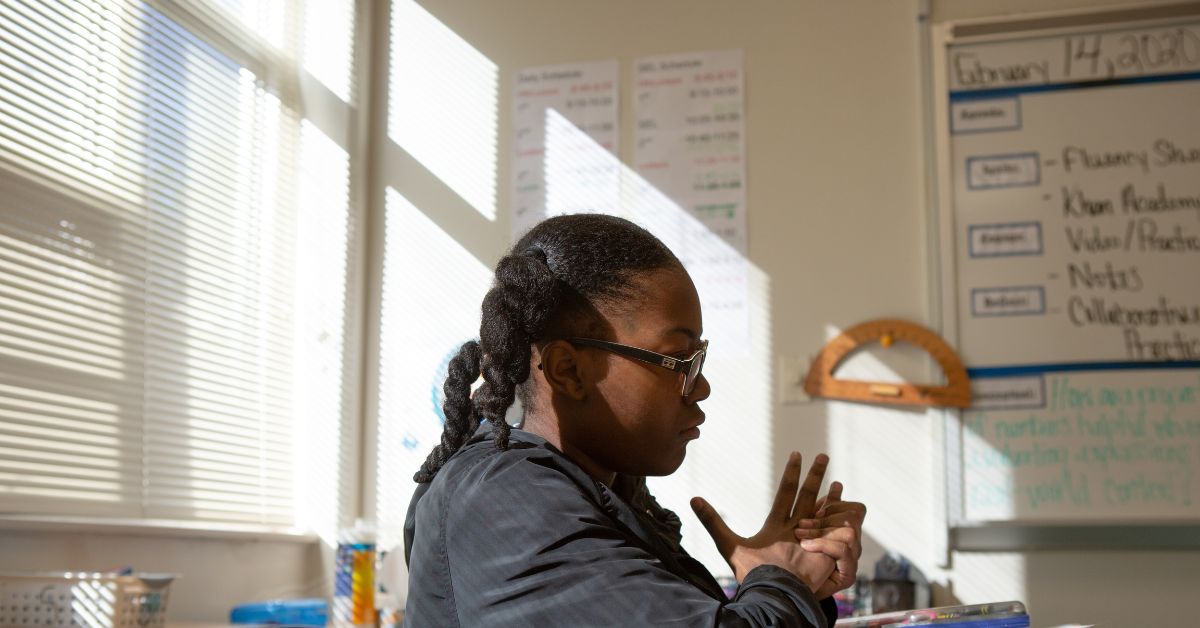
Apr 6, 2023 1:30:00 PM
“Miss Jones, I am so sorry for how I behaved last year. I am going to do my best to stay out of trouble this year. I should have listened to you when you told me why I needed to change my attitude.”
Last year, Em was running with the wrong crowd, getting into so much trouble. We even caught her on camera taking another student’s lunch–and she still would not own her behavior. Like many students, she lacked social emotional learning (SEL) skills.
Eventually, Em was placed in FOCUS, an alternative learning environment. She told me this year she did not enjoy that at all.
If there’s one thing the COVID-school shutdowns and constant disruptions to learning taught us, it’s that cultivating and developing relationships with students are essential to creating a supportive learning environment that promotes the students’ social and emotional needs.
Helping Students Understand Behavior Choices
One of the SEL Learning Targets in the Arkansas Guide for Life states that students need to be able to recognize how behavioral choices impact school and life success. Armed with this knowledge, when I make a decision about a student's behavior, I hold a conversation to lay all my cards on the table. When these conversations happen, my students understand and receive discipline a lot better.
When approaching such a conversation, I always remember that I too was once a student, and a child; and one thing that never sat well with me was being scolded without reason.
This always left me feeling defeated. It made me feel that the teacher did not like me. Funny thing? I have heard my students tell me these exact same things. Hearing this from them truly sucks.
Explaining the ‘Why’
At first, when I attempted to talk to Em, she would speak under her breath and always wanted to have the last word. Eventually, I asked her to stay after class.
In that conversation, I told her about all the behaviors I witnessed and about other teachers agreeing. I told her that the purpose of us talking was to stop her from going down the wrong path.
Em is a bright student; I knew that she just needed some redirection and the truth. She needed to know “why.”
It took a year for Em to understand the consequences of her behavior, but eventually she came back to my class. At that point, she trusted me enough to own up to her mistakes and talk to me about them.
Building Communication and Trust
I have not always taken the time to tell the student “why.” I was too busy moving on with my day, and never stopped to think how this lack of explanation affected a child’s behavior, and sometimes, the course of their school day.
Early on in my career, a student named Dee told me that coming to my class felt like being in prison because I yelled all the time for no reason, and never gave students a break. It was then I started to reevaluate how to handle my class and to ask myself how it could have gone differently.
I want to build a line of communication and trust with my students. That is especially important when it comes to the learning process.
In my English class, in order to be successful, students need to develop the full components of an essay. When they resist, I explain why.
I tell them that writing is essential to furthering their education and I often ask them that if they, as young Black students, do not take their learning seriously, why should anyone else?
As a teacher, I know that transparency and reasons behind my actions will take me far. Now that I take the time to break down why I do anything with a student, the results are always positive.
As the year has progressed, Em begins to think before she reacts. I hear, “Miss Jones, I need to speak with you. I am doing this the right way because I know my attitude and I don’t want to get in trouble.”
She gives me her “why” in order to avoid trouble, and I am now able to prevent any potential problems that can arise. The lines of communication are a lot stronger not only with Em, but with other students who are having the same issues. Taking the time to explain my “why” is the gateway to effective learning, communication, and bridging the gaps of trust with my students.
Photo by Allison Shelley for EDUimages.
Kendria Jones is an 8th Grade ELA teacher at Jack Robey Jr. High in Pine Bluff, Arkansas. She is a Teach Plus Arkansas Senior Policy Fellow.
Few issues in education spark more tension and debate than standardized testing. Are they a tool for equity or a burden on students? A necessary check on school systems or a flawed measure of...
Charter schools are public schools with a purpose. Operating independently from traditional school districts, they're tuition-free, open to all students, and publicly funded—but with more flexibility...
Despite the benefits of a diverse teaching force, prospective teachers of color fall out of our leaky preparation pipeline at every stage: preparation, hiring, induction, and retention. Here’s what...
Ed Post is the flagship website platform of brightbeam, a 501(c3) network of education activists and influencers demanding a better education and a brighter future for every child.
© 2020-2025 brightbeam. All rights reserved.
Leave a Comment